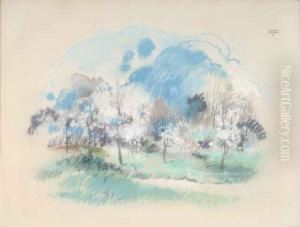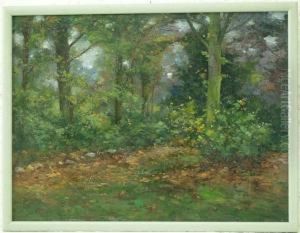Gustave Jacques Stoskopf Paintings
Gustave Jacques Stoskopf was a French artist known for his work in painting, stage design, and illustration. Born on September 18, 1869, in Brumath, Alsace, he was a part of the Alsace region that had a unique cultural identity, being at the crossroads of French and German influences. His artistic tendencies were evident from a young age, and he pursued his passion by studying at the École des Arts Décoratifs and the École des Beaux-Arts in Strasbourg.
Stoskopf's style was heavily influenced by the Alsatian culture and the region's rural life. His works often depicted everyday scenes with a touch of humor and satire. He was also known for his caricatures, which reflected his sharp wit and keen observation of the social and political scenarios of his time. His paintings were characterized by a vivid use of color and a strong graphic sensibility, which was partly due to his experience with stage design and illustration.
During his career, Gustave Stoskopf contributed significantly to the cultural life of Alsace. He was a prolific artist who not only exhibited his work in galleries but also engaged in the decorative arts, providing designs for tapestries and ceramics. His involvement in theater led him to create sets and costumes, which further diversified his artistic output.
The First World War brought significant changes to Alsace and to Stoskopf's life. Alsace was a disputed territory between France and Germany, and the war's outcome had a deep impact on the region's cultural expression. After the war, Stoskopf continued to produce work that celebrated Alsatian identity and reflected the changing times.
Gustave Stoskopf's contributions extended beyond his own practice. He was also a mentor to other artists and played a role in the artistic community as a member of various cultural organizations. His legacy includes not only his artworks but also his influence on the Alsatian cultural heritage.
Stoskopf passed away on February 10, 1944, in Brumath. Despite the challenges of the times, including the two World Wars and the shifting political landscape, his work remains a testament to the enduring spirit and character of Alsace. Through his depictions of local life, traditions, and landscapes, Stoskopf's legacy continues to be celebrated as an integral part of the region's artistic history.

